High Noon (1952)
Directed by: Fred Zinnemann
Written by: Carl Foreman, John W. Cunningham
Starring: Gary Cooper, Grace Kelly, Katy Jurado, Lloyd Bridges
USA
AVAILABLE ON BLU-RAY: 15TH SEPTEMBER, from EUREKA ENTERTAINMENT
RUNNING TIME: 85 mins
REVIEWED BY: Dr Lenera, Official HCF Critic
In Hadleyville, a small town in New Mexico, Marshal Will Kane, newly married to Amy Fowler, prepares to retire. The happy couple will soon depart for a new life to raise a family and run a store in another town. However, word arrives that Frank Miller, a vicious outlaw whom Kane sent to jail, has been released and will arrive on the noon train to meet his gang and exact revenge. Devout Quaker and pacifist Amy gives Kane an ultimatum: she is leaving on the noon train, with or without him. Kane’s attempts to round up a posse, but is met with fear and hostility….
I can’t recall exactly when it was I last saw High Noon, but it must have been when I was very young, when westerns were still shown very often on TV and us kids used to love them. I can’t even recall what I thought of it, even though it’s really quite an untypical example of the genre especially for the time, a film which either dispenses with or downplays many of the conventional elements, so much so that it doesn’t even feel like a western at times. It does a lot of curious things, such as making little attempt to hide its low budget and therefore looking much like a routine ‘B’ ‘oater’ of the period, and, while like some other Stanley Kramer-produced pictures it deals with a moral or political issue which here is civic responsibility, it seems awfully confused in its messaging, something that’s really rather jarring seeing as it’s handled with Kramer’s typical heavy handedness. As I will explain a bit later, I had serious problems trying to understand and like one female character who I think we’re intended to like, and even to understand the way its hero goes about his business, plus a very strange plot contradiction which I’ve never seen mentioned [maybe it’s just me of course]. But on the other hand it’s a fine example of economical yet precise film making, extremely taut, a collection of very short dialogue scenes and repeated motifs that eventually reach a fever pitch and in no way make us feel that we’re missing out by not being given any gun play to enjoy before the big finale. All critics have some opinions that differ from from the norm and I’m going to say here that I don’t think, to be honest, that High Noon is really the all-time classic that it’s often claimed to be, even if it obviously still has many qualities. But it’s certainly very interesting, is often expertly crafted and oddly enough doesn’t really seem particularly dated except for maybe its score – which is an odd creation in itself that I’m not sure entirely works.
Screenwriter and co-producer Carl Foreman wrote a four-page treatment that was very similar to a short story called The Tin Star by John W. Cunningham, so he purchased the film rights to the story before writing the script. Richard Fleischer later claimed he helped Foreman develop the story over eight weeks while driving to and from the set of The Clay Pigeon. John Wayne turned down the lead role because he felt that the tale was an allegory against blacklisting, which he actively supported – though ironically, since Gary Cooper was working in Europe at the time he won Best Actor for the film, he asked Wayne to accept the Oscar on his behalf, which Wayne did. Gregory Peck, Marlon Brando, Montgomery Clift and Charlton Heston also declined the role. A debuting Lee Van Cleef was offered the part of Deputy Marshal Harvey Pell, but when he refused to have his nose surgically altered to appear less menacing, he was cast instead as villainous henchman Colby. Filming took place in several California locations, though most of the street scenes were filmed on the Columbia lot in Burbank, California. During production, Foreman was called before the House of Un-American Activities Committee during its investigation of “Communist propaganda and influence” in Hollywood, was labeled an “uncooperative witness” for not naming names, and blacklisted, influencing Foreman to tweak the script to reflect what was happening to him. Producer Stanley Kramer immediately dissolved their partnership, removed Foreman’s co-producer credit, and later said that Foreman had threatened to falsely name him as a Communist. Though mostly a critical and commercial hit, Wayne said that he considered High Noon “the most un-American thing I’ve ever seen in my whole life”, and later made Rio Bravo with Howard Hawks in response. A TV sequel, High Noon, Part II: The Return of Will Kane, came out in 1980, and in 2000, Stanley Kramer’s widow, Karen Sharpe Kramer, produced a TV remake.
While the picturesque is mostly avoided, we do open with a great shot of two trees, a horse and a silhouetted man sitting on a rock. The man is Jack Colby, outlaw and the guy played by Lee van Cleef, though he’s not really in the film much and doesn’t even have any lines. He’s waiting for two other bad men, and an unusual device has the other men speak but we don’t hear what they’re saying. They then parade through Hadleyville before stopping at the train station to wait for their boss Frank Miller. Marshall Will Kane is getting married, and – lucky Kane – to a woman under half his age [Cooper was 50 and Grace Kelly 23, though this didn’t stop rumours of an affair happening on-set], but as he leaves for a more settled life he turns their carriage around and heads back to town. He says that he does this because; “They’ll just catch us alone out in the open prairie. My only chance is to stay in town and get help” – though the fact that he went back to the town seemingly out of necessity is then bizarrely forgotten. And we’re soon asked to sympathise with Amy, who is going leave if Kane doesn’t show up at the station at noon. One can respect her views, especially when we’re told that both her father and brother were shot, but surely she’d at least come with him? What does he even see in her, even though she’s played by Kelly – though a rather unnatural and stiff Kelly in her first starring role? A better match is Helen Ramirez, the Mexican businesswoman who once had relationships with both Kane and Miller, and is now with Pell. At least Helen understands why Kane is doing what he’s doing [“If you don’t know, I can’t explain it to you”], and tells Amy that if Kane were her man, she would not abandon him in his hour of need, though she still intends to leave town, because “Kane’s not my man”. Though accompanied by the expected Hispanic-tinged musical flourishes, Helen is quite different to the usual sultry, ‘bad girl’, sacrificial lamb women characters of her ethnicity that tended to be in films of this kind.
Kane soon finds himself very alone in town. Nobody wants to help him. Judge Percy Mettrick, who sentenced Miller, flees on horseback. Marshal Howe is old and arthritic [the perennially underrated Lon Chaney Jnr. in a typically fine performance]. Pell refuses to help his former boss because he won’t put in a good word for him so he can be promoted. Supposed friend Sam Fuller hides in his house, sending his wife to the door to tell Kane he’s not in. The saloon patrons are Miller’s friends and welcome a showdown, as does Trumball the undertaker who has lost much business since Kane cleaned up the place. Even visiting church results in hostility. One can perhaps understand why Herb Baker agrees to be deputised but then backs out when he realizes he is the only volunteer, but Kane’s behaviour is often strange. He’s bizarrely meek when asking for help, never attempting any pressure, and sends two people who want to aid him home – okay, they comprise of a 14-year old boy and a drunk [Jack Elam’s part was heavily cut down] – but they would have been something. And Kane never ever makes the argument that he stayed more out of choice than principal. It would have helped his case. Clearly this is meant to be a more vulnerable western hero than usual, but it seems to me that he has a bit of a martyr complex about him. Looking older than 50, wearing no makeup, and visibly ill due to several health problems [which could be why his fight with Bridges is done in very modern style quick cuts and frantic camera], Cooper certainly delivers a strong performance though, alternately stoic, resigned, and very very scared, Kane’s fear being portrayed especially well.
The story is supposed to be taking place in real time, and it’s mostly accurate, give or take a few minutes probably because there was extensively re-editing after the first screening. Much back story to characters was removed, so that we’re often merely given hints to the nature of past occurrences. Cuts to ticking clocks, plus repeated returns to the villains at the station and an increasingly isolated Kane wondering about town, do build up the suspense, but when it comes the final showdown, while being very lively, is a let-down because, instead of showing just how justified the fear was for 75 minutes in the final ten, these so-called dangerous men are able to miss shots from about 15 feet away, while one action by one particular character makes absolutely no sense considering what we know about this person – and what happened to that fire, it’s gone the next scene! The film’s look at the two conflicting but universal notions of bravery and cowardice does have some truth in it though. We may condemn most of the townsfolk as being selfish and chicken, but would you or I be any better when asked to help someone in an action that could result in death? However, I don’t think that the film is really the bold left-wing statement which many claimed it to be at the time, seeing as it basically portrays the majority of humanity as being rotten, and, while it obviously criticises the people who didn’t stand up to McCarthy and the HUAAC, it also suggests the need for a strong stance on law and order. It seems to me that principle is really the central theme, which places the film with director Fred Zinnemann’s later A Man For All Seasons. It’s something which makes the final moment, where we’re told that the town and his Sheriff’s badge weren’t really worth fighting for at all, and that Kane instead fought for principle, so dramatic and also so cynical. However, this all jars with the early scene that had Kane going back to the town because it was the best option. Am I the only person who sees this is a major flaw?
In a film mostly avoiding showy camerawork despite a great deal of deep focus cinematography from Floyd Crosby, we do get one fabulous crane shot where the camera rises up to show Kane standing alone on a deserted street in a deserted town. The song Do Not Forsake Me, Oh, My Darlin, sung on the soundtrack by Tex Ritter though popularised further in a version sung by Frankie Laine, began a fashion for giving westerns potential pop hit themes. An early cut had the song heard throughout – as it stands, we still hear it several times when Kane is walking down the streets, while instrumental adaptations and variations constantly turn up throughout Dmitri Tiomkin’s music score. It’s all quite bold, but you may get sick of hearing the same tune over and over again. I feel kinda bad for not giving High Noon much love. Even several US Presidents have cited their adoration for the film, probably because it depicts a lone individual going against the popular will. It is often innovative and clever, but to me seems too cold and muddled to rank up there with the truly great westerns.
Rating: 









The 4k restoration of High Noon looks incredible. I can’t compare it to earlier releases because I never owned any of them, but I don’t think that I’ve ever seen a film of this vintage look better. The grey-heavy appearance of the film isn’t too appealing, but the image is sharp [though without obvious digital sharpness], the grain is evenly distributed, the detail is immense, and the blacks have barely any crush. This film was released twice on Blu-ray on Region ‘A’ by Olive Films, the first version having the old TV The Making of High Noon featurette but nothing else, the second having an improved print and four new featurettes. Eureka’s release omits those featurettes but keeps the Making of and instead includes three other featurettes that were on the last Region 1 DVD release from 2002. Along with not one but four new features including two audio commentaries, this makes it the film’s most comprehensive release despite the omission of three short Tex Ritter pieces and an older commentary that were on that DVD.
The first of the two audio commentaries is by Glenn Frankel, author of a book on High Noon. I’m assuming that the book is better than the commentary, which does go into detail about the McCarthyism that went on during the making of the film, and often relates stuff in the film to true events. We learn things such as one third of all films made during the period being westerns. We often forget how popular they once were. However, he spends far too much time describing in considerable detail what’s taking place on screen. Much better is the second track by Stephen Prince. It’s rather scholarly, but I didn’t almost tune out like I tend to do with very intellectual commentaries. Prince talks about everything from certain shots and editing in particular scenes, to pointing out how High Noon goes against the theme of most westerns which portray necessary modern progress over savagery, it instead suggesting the opposite. I personally couldn’t see at all how the Helen character symbolises African-Americans and their plight, and he rather unfairly lambasts Rio Bravo, but I did leave the track with a slightly greater appreciation of the film than before.
Neil Sinyard is at his best in his interview, bringing his great knowledge, admiration and experience of meeting Zinnemann to a fine look at the film. He makes a case for it being very personal to the director despite it sometimes being called Foreman’s film, places it within Zinnemann’s work, and gives a potted history of the McCarthyism element. Very good indeed. This is followed by the audio of a very lengthy Q and A with Foreman from 1969 when he’d become a major producer in the UK, and it should be really fascinating to anyone interested in movies generally, at least after the fawning introduction to Foreman finishes. He’s asked some good questions about several of his movies including High Noon [though this bit is only towards the end] and other things like does he regret not having time to write and what would be his dream project [the answer is surprising, as is why he wouldn’t ever do it], and he answers in painstaking if sometimes rather too soft spoken detail. I can’t work out what the film he mentions having spent three years on and which he doesn’t seem too pleased with, is.
Inside High Noon, narrated by Frank Langella and featuring Cooper’s daughter Maria-Cooper Janis, Foreman’s son Jonathan Foreman, and Zinnemann’s son Tim Zinnemann [who all provided the commentary on the 2002 DVD] – along with others including Bill Clinton discussing what the film means to him, goes through the film’s background, themes and looks at its qualities, along with one script mistake due to the removal of a second Marshall character before shooting, though it’s little different to the number of Replicants confusion in Blade Runner, and I didn’t notice it myself even though I thought I was paying attention. It’s warm-hearted, even nostalgic in tone. The 1992 The Making of High Noon has Leonard Maltin rush through much [or in the case of the blacklisting stuff skim over] of the stuff we’ve heard elsewhere, though adds a couple of extra stories, and Zinnermann and Kramer make appearances, which is nice. And finally Behind High Noon is another 2002 featurette telling us – well – what we already know, though overall the special features seem very comprehensive.
Many think High Noon is wonderful and I still admit that it’s quite a unique and layered western, while fans will need no further encouragement to purchase what is no doubt its best looking [to the point of being reference material for a restoration of a film of this vintage] and most feature-packed release. Recommended.
SPECIAL FEATURES
*Limited Edition Hardbound Slipcase [3000 copies]
*A LIMITED EDITION 100-PAGE Collector’s book featuring new writing on the film; the original short story The Tin Star by John W. Cunningham; excerpts from writings and interviews with director Fred Zinnemann; archival articles and materials relating to the film
*4K Digital Restoration
*Optional English subtitles for the deaf and hard-of-hearing
*Brand new and exclusive audio commentary by historian Glenn Frankel, author of High Noon: The Hollywood Blacklist and the Making of an American Classic
*Brand new and exclusive audio commentary by western authority
*New video interview with film historian Neil Sinyard, author of Fred Zinnemann: Films of Character and Conscience [29 mins]
*A 1969 audio interview with writer Carl Foreman from the National Film Theatre in London [77 mins]
*The Making of ‘High Noon’ [22 mins]– a documentary on the making of the film
*Inside ‘High Noon’ [47 mins] and Behind ‘High Noon’ [10 mins] – two video pieces on the making and context of the film
*Theatrical Trailer

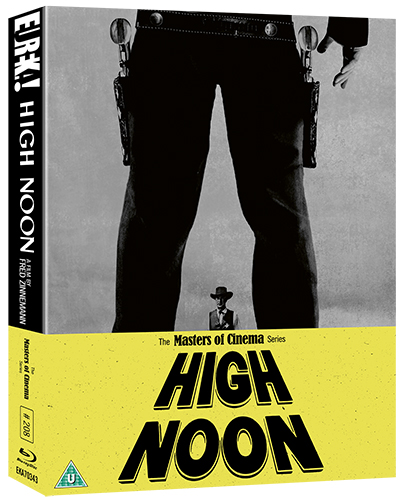
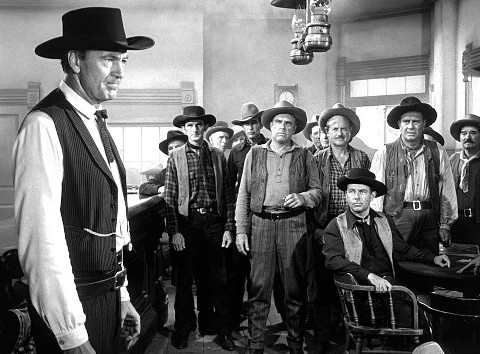


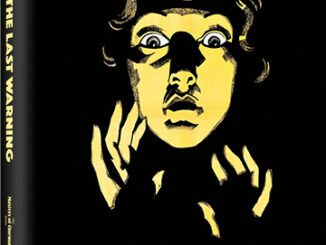
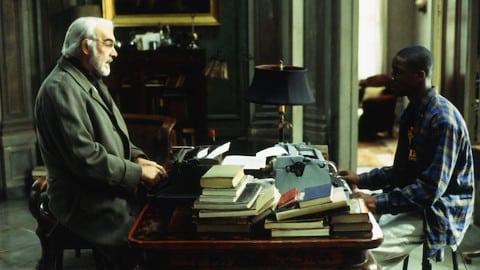
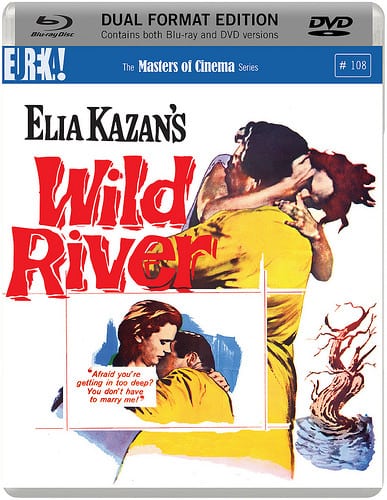
Be the first to comment